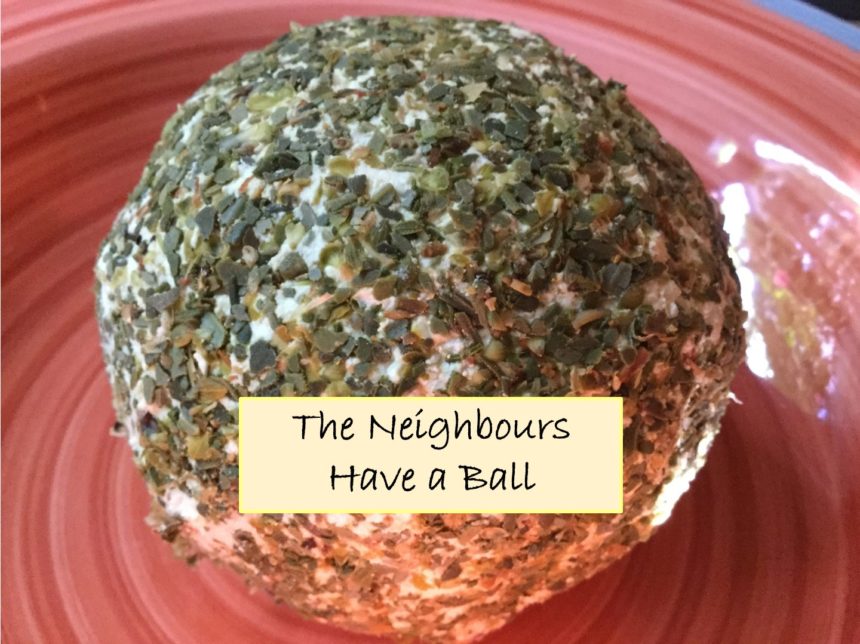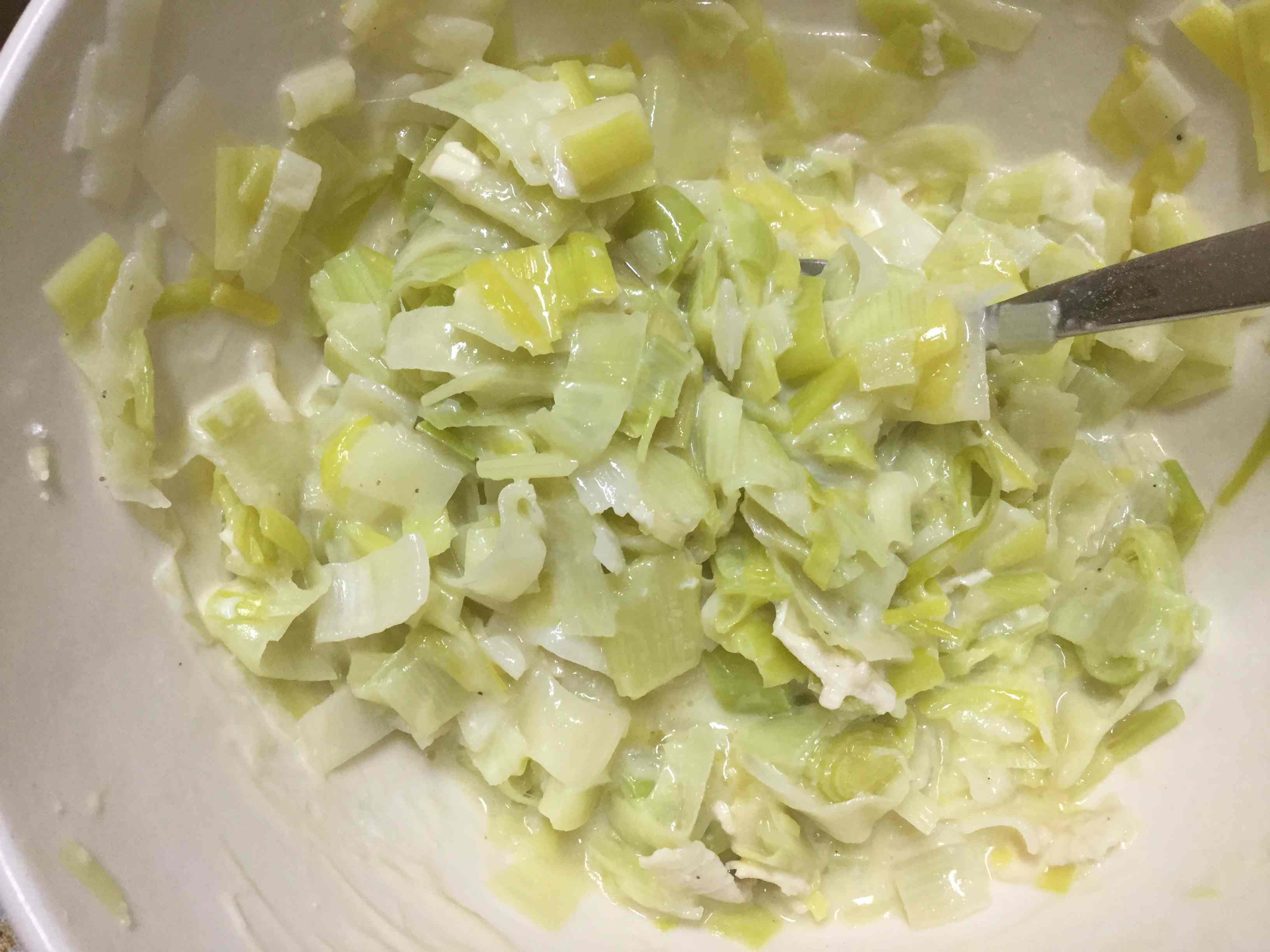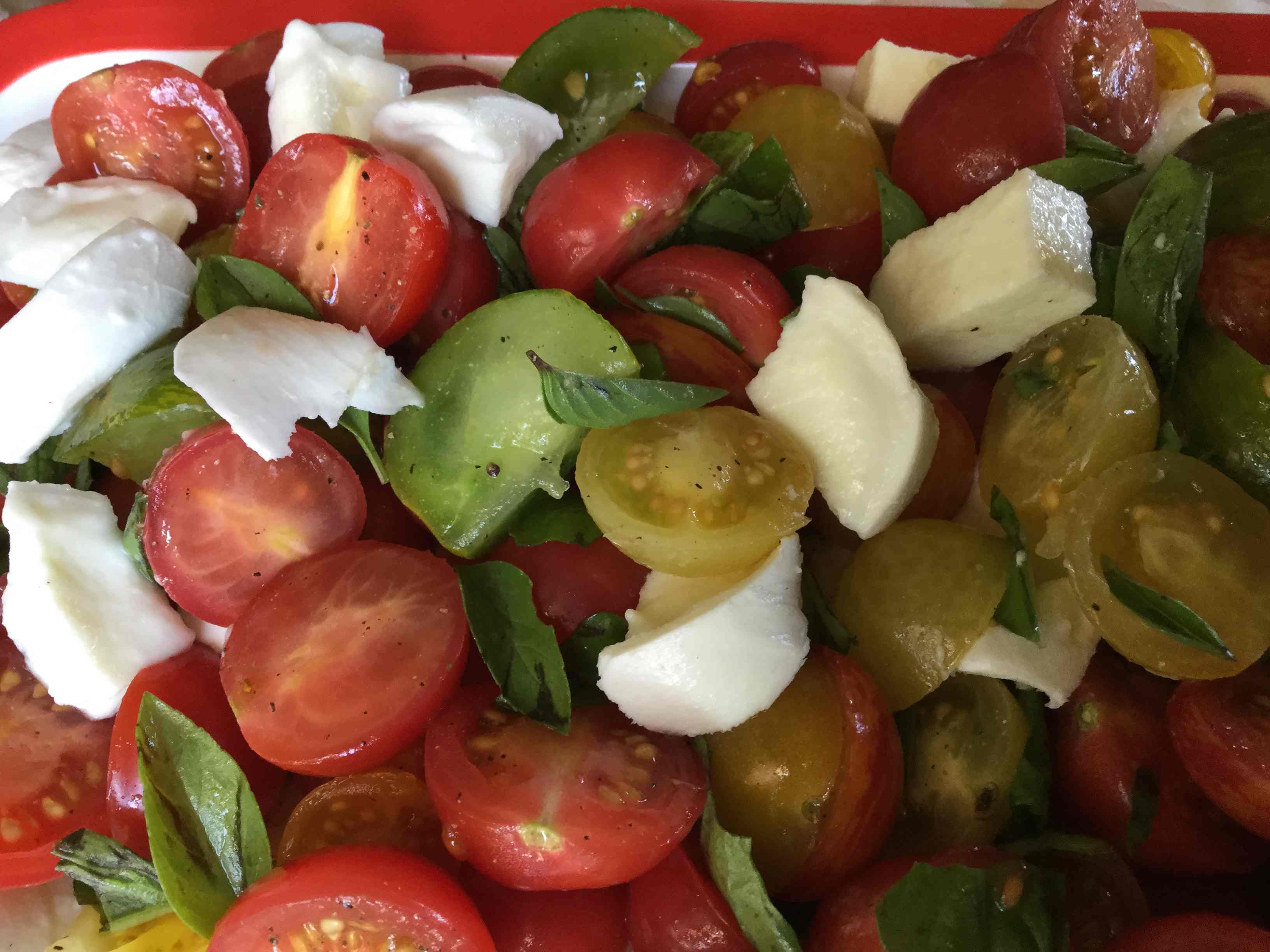This is a continuation from We Invite The Neighbours In: Perfect Weather!
Easy to prepare nibbles
With Launceston and the Tamar region having very agreeable summery weather from November to March, we can plan events at Olive’s Cottage with a high degree of confidence. We aim to be outside and use the main deck or the barbecue pit. (We can only fit six around the dining table inside: four guests and the two of us. If we invite a larger group, and the weather is not agreeable, it means people end up eating off hand-held plates in the lounge. )
Windermere is a semi-rural settlement with houses on half-acre or bigger blocks spread out along the road. There is a great feeling of community and we invited about a dozen neighbours in for evening nibbles and drinks in late February. It would be on the evening of the day we flew in from Melbourne, which meant we would have limited time for shopping and preparation and that our nibbles would need to be easy to put together. As it was, with generous contributions from our visitors, there was plenty to drink and plenty to eat, even though we started at 5.30 pm and most of them did not leave until after 10.00 pm.
Four recipes (or methods) for easy-to-prepare nibbles are given below. They can also be used in other guises such as a vegetable accompaniment, salad or pasta sauce. We end with a bonus dish that is simple and spectacular.
Baguette slices with cream cheese and smoked salmon
This is a standby recipe of some Sydney friends as they are not just easy and tasty, but people love them.
You need one baguette (French style or otherwise), 200 g smoked salmon (Tasmanian preferably), cream cheese (or similar, such as creamed feta or crème fraiche), capers and dill sprigs.
It is best to prepare these as late as possible, otherwise the bread will dry out. Slice the baguette, spread with some cream cheese, top with smoked salmon and garnish with capers and dill.
Antipasta salsa of semi-dried tomatoes and marinated char-grilled vegetables
We developed this recipe in the late 1980s. We had some friends coming for dinner but we hadn’t thought through what to have with pre-dinner drinks. In the fridge we had some containers of leftover antipasta ingredients, in particular, sun-dried tomatoes, marinated char-grilled artichokes and char-grilled eggplant. We chopped them up, and mixed them together with some herbs and oil, and found we had a marvellous salsa to go on top of bread slices or crackers. One of our guests remarked it was one of the most delicious things she had ever eaten!
This recipe works equally well using store-bought ingredients or using your own barbecued or grilled ingredients or using a mixture of both.
However, note that it will not work if you use low-quality bought ingredients. Thus, taste each item before buying it to ensure it is not ‘thin’ or watery and lacking in flavour, or that it is not ‘off’, not vinegary nor too briny, and not fermented. They should be marinated in good quality oil (olive or otherwise). Herbed marinating oil can be OK, but taste it first. Many marinating oils are quite bland and can be of poor quality; if so, don’t use it even if the vegetables are fine. You might want to add a few more extra flavourings, such as dash of garlic (tiny hint) or chilli. Vary the herbs according to availability; if you don’t have those listed, use substitutes.
Serve as a dip or spread on quality bread, fresh or toasted. Or crackers if necessary. The oil does tend to run, so warn your guests to eat the dip over a small plate or serviette.
The salsa can also be used as a pasta sauce or in sandwiches.
The ingredient list below makes a lot of salsa, enough as a dip for a dozen or so guests. Cut the volume back as needed. Swap the ingredients around depending on what you have on hand, but the artichokes and tomatoes really are essential. Compared to the photo above, the photo below includes some roasted pumpkin.
Ingredients:
- 3 medium marinated char-grilled globe artichokes (or equivalent in small or large)
- 100 g marinated semi-dried tomatoes
- 100 g marinated char-grilled eggplant
- 100 g marinated char-grilled red pepper
- (optional) 100 g marinated char-grilled zucchini, pumpkin or sweet potato
- (optional) 40 g to 50 g pitted black and/or green olives
- 3 tbsps extra virgin olive oil, or good quality marinating oil from the artichokes and/or tomatoes
- 1 tbsp French tarragon leaves
- ½ tbsp thyme
- 1 tbsp ordinary or garlic chives
- salt and black pepper to taste.
Coarsely chop the vegetables and olives. Place in a bowl, along with a small amount of the marinating oils. Wash the herbs and thoroughly pat dry. With a sharp knife, chop the herbs and add, along with salt and pepper. Add more marinating oil or olive oil to moisten. Use straight away, or set aside for up to several hours (though it lasts OK for several days in the fridge).
Leeks in creamy Camembert sauce
Leeks soften nicely in the microwave. Wash and clean them well. Drain well and slice into rings, or lengthwise and then crosswise if large leeks. Without adding any extra water or ingredients, place the leeks in a bowl suitable for the microwave, cover with cling wrap. In two or more bursts, cook the leeks until they are quite soft, stirring through each time.
You can treat them simply, seasoned with salt and pepper and maybe a little butter. Or you can make them more interesting by also adding some pieces of Camembert cheese and/or other cheeses such as Gorgonzola. Stir in some sour cream or ordinary cream if you wish.
You can serve these creamed leeks as a vegetable accompaniment, or as a pasta sauce or as a dip or spread to be spooned on top of bread, toast or crackers.
Salad with shanklish or feta cheese and tomatoes and onion
An acquaintance alerted us to this dish using shanklish cheese that is great served as a dip with bread, baked pita bread or crackers or as a salad. Shanklish is a Middle Eastern cheese made from yoghurt, formed into a ball, coated with spices then allowed to age. See the photo above. It may be hard to track down, but you can substitute a quality feta instead. We find both give equally good results. You will find your shanklish mixture is almost addictive.
The onion is salted and drained to remove some of its kick. To avoid the dish being too wet from the juices, assemble the dish at the last minute, making sure that the onion and tomato (and cucumber if using) do not have too much residual juice. Add as much oil as needed for flavour and texture; add too much and the oil will drip everywhere and the mixture might ‘curdle’ a little. The ingredients below make two to three cups; increase or decrease the volume as required. Don’t hesitate to make a large amount as it won’t last long!
Ingredients:
- 1 small red or white onion
- 1 tsp salt
- 1 medium sized flavoursome ripe tomato, deseeded and juice removed
- optional: 1/3 cup diced cucumber, deseeded and juice removed
- 100 – 150 g shanklish cheese or quality crumbly fetta
- ½ tsp dried or 1 tsp fresh oregano
- ¼ tsp chilli powder
- ¼ tsp smoked or sweet paprika
- good pinch of sumac, if available
- 2 to 4 tbsps extra-virgin olive oil
- 1 tbsp shredded flat-leaf parsley
Peel the onion, halve and slice into thin half-moons. Put into a strainer, sprinkle the salt over and stir in. Allow to sit for 20 minutes or so for the liquid to develop. Rinse under water to wash away the salt and pat the onion dry with paper towel or a tea towel, ensuring there is minimal moisture left.
Cut the tomato in half, across the middle (so you have the stork end in the middle of one half). Squeeze or spoon out most of the juice and seeds, retaining for another use if you wish. Cut the tomato halves into cubes. If using, peel the cucumber, remove the seeds, then dice.
Crumble the shanklish or fetta cheese into a bowl and mash and break up a little with the back of a fork. Add the spices and gently combine. Then add the onion and tomato (and cucumber) and some oil and gently combine again. Sprinkle with the parsley and pour over a dash more oil for effect.
A bonus recipe: Caprese salad
A few days later we had others for lunch. Via neighbours and family members we had a surfeit of homegrown baby tomatoes of various sorts, so a Caprese salad seemed appropriate. You will find many versions of this salad. We tend to use the method Rhonda’s sister, Rose, uses. She prepares the salad an hour or more beforehand just using the tomatoes and mozzarella. After a light sprinkling of salt, she allows it to sit until ready. The salt draws out the juices from the tomato and she generally finds it is not necessary to add oil. When ready to serve, garnish with pulled basil leaves (and a drizzle of your favourite vinegar and/or some olive oil if you need to). For this dish to work you must use flavoursome tomatoes, the best mozzarella and summer crisp basil. (Instead of mozzarella, other cheeses would work well too: feta, goats cheese, … though they may break up and cloud the juices.) You can serve it with our without the cheese as a small starter in individual bowls.












